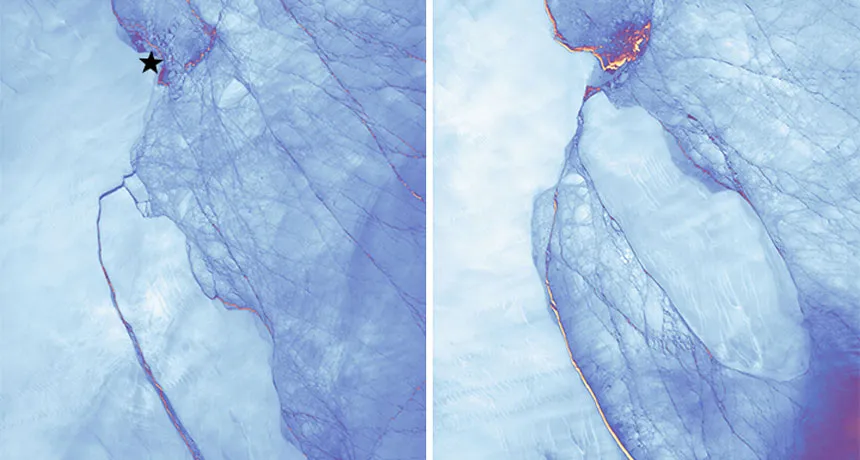The giant iceberg that broke from Antarctica’s Larsen C ice shelf is stuck
The chunk is threatening to destabilize more of the continent’s ice

BREAK UP About a year ago, a massive iceberg calved off of Antarctica’s Larsen C ice shelf (left). Since then, it has stayed in the area (right), bumping up against an elevated ice promontory (star).
Joshua Stevens/NASA Earth Observatory